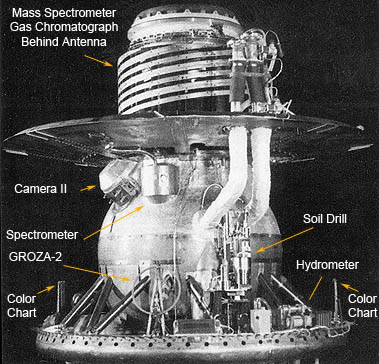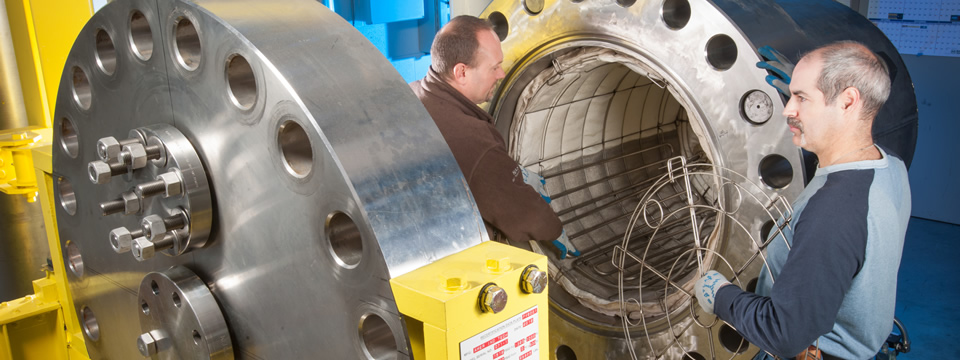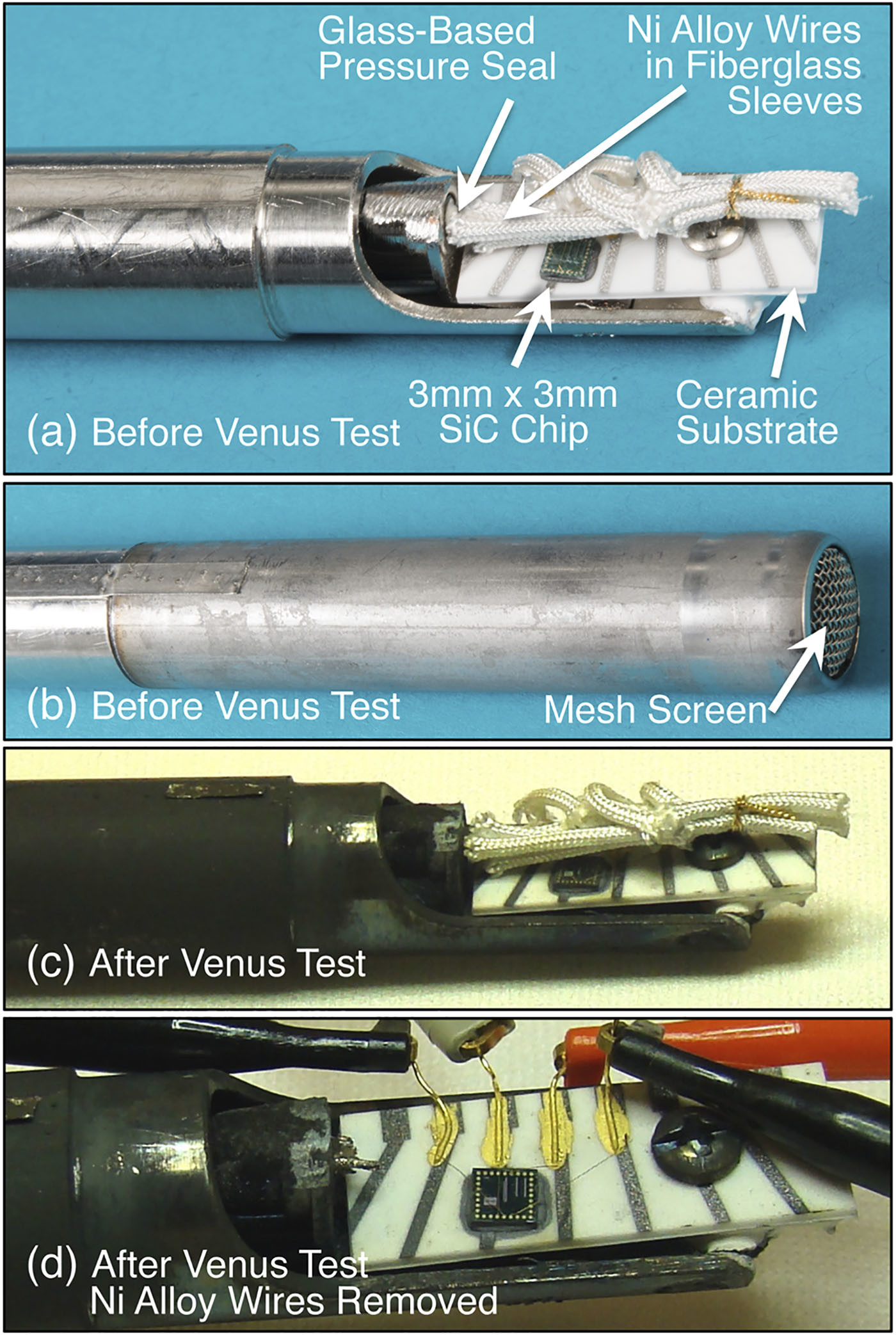Silicon carbide electronics can run on Venus without protection and cooling.

Right: March 1, 1982, the landing module Venera-13 made a soft landing on the surface of Venus and dropped the protective cover from the camera. Left: an attempt to take a sample of Venusian soil
Venus has a very hostile environment. Due to the large amount of greenhouse gases, there is an extremely high temperature (about 460 ° C) and a pressure of about 9.4 MPa, about 90 times more than Earth's. An additional problem is the high concentration of SO 2 in the atmosphere (about 180 ppm near the surface). This concentration is sufficient to form dense acid clouds tens of kilometers thick.
Because of such problems, developers of past and current spacecraft have to introduce extraordinary measures to protect silicon chips: these are powerful high-pressure housings and / or cooling systems to protect critical electronics. Installing protection greatly increases the mass of the device and the cost of the mission. With this protection, the absolute record for the time of work on the surface of Venus for the earth apparatus is 2 hours and 7 minutes. The record belongs to the interplanetary station Venera-13 , the descent module weighing 1644 kg, the landing module 750 kg.

Landing module "Venus-13"
')
A group of engineers from the NASA Research Center. J. G. Glenna proposed a new material for electronic circuits, which will dramatically increase the survival rate of the device and reduce the cost of the mission. For the manufacture of electronics, they propose to use a new material.
In recent years, several impressive experiments have taken place with the reliability of silicon carbide (4H-SiC) microcircuits. In one of the previous experiments, the same group from the center of Glenn made chips of 24 field-effect transistors with a gate-based transition ( JFET ), two levels of metal interconnects and a ceramic package. The chips functioned steadily in an oven at 500 ° C for 1000 hours. But those experiments were carried out in the earth's atmosphere, so now the group has prepared another experiment, this time in an acid atmosphere and under pressure.
Two integrated circuits of JFET silicon carbide ring oscillators were manufactured. The ring oscillators were chosen first of all because they work with the minimum number of metal interconnects (one output signal in addition to the standard + V DD , GND, and -V SS power supply). In addition, it is an accepted standard for the demonstration of logic integrated circuits, their output signal can be distinguished even in conditions of significant electrical interference.
For testing, they made three- and 11-step ring generators. Without any protection, they were placed in physical and chemical conditions corresponding to atmospheric conditions on the surface of Venus. The experiment took place in the laboratory of extreme environmental conditions of the NASA Research Center. JG Glenn - in a NASA Glenn Extreme Environments Rig (GEER) 800 Liter Chamber.

GEER Camera at NASA Research Center J. G. Glenn for testing equipment in extreme environmental conditions
To take readings from the chip during testing, a special through probe was designed in the chamber, the end of which was in the chamber. The illustration shows this end of the probe with an integrated circuit of an 11-stage ring oscillator before and after testing.

The microcircuit was packed into a 3 × 3 mm case, electrical signals were received from four Nickel 201 wires. The wire insulation was made of ceramic thermal insulation with crushed magnesium oxide in an Inconel 600 sheath. To isolate the probe in the GEER chamber, the ends were sealed on both sides curing cycles of heat-resistant glass Ferro 1180A.
At one end of the probe, a lid was installed with holes through which the acid atmosphere of Venus penetrated. It can be seen in photo (b) above (Mesh Screen).
Before being shipped “to Venus”, that is, into the GEER chamber, the integrated circuits and probes worked more than 47 hours in a furnace with an earthly atmosphere at a temperature of 460 ° C to 480 ° C, and then another 56 hours in a GEER chamber with moderate conditions - temperature 460 ° C, in a nitrogen atmosphere and under a pressure of 9.0 MPa. Only after this, SO 2 was introduced into the chamber and pressure was raised.
Experience in the simulator of the Venusian atmosphere lasted 21.7 days. The signals from the chips from the camera were transmitted via a 14-meter cable to computer-controlled instruments located in a safe place. 24 volt power was transmitted to them in the same way.

As shown in the graph, the 3-stage ring generator fully worked out 521 hours of the experiment at a stable frequency of 1.26 ± 0.05 MHz, and the 11-stage one worked at a frequency of 245 ± 5 KHz for about 109 hours, after which the signal began to fade and disappeared after 161 hours However, the study of the chip after the experiment showed that it remained in a fully operational and functional state.

The result of the 11-stage ring generator in the GEER chamber (above) and after extraction from it at the end of the experiment (bottom)
The scientific article was published in December 2016 in the journal AIP Advances (doi: 10.1063 / 1.4973429).
Source: https://habr.com/ru/post/401469/
All Articles